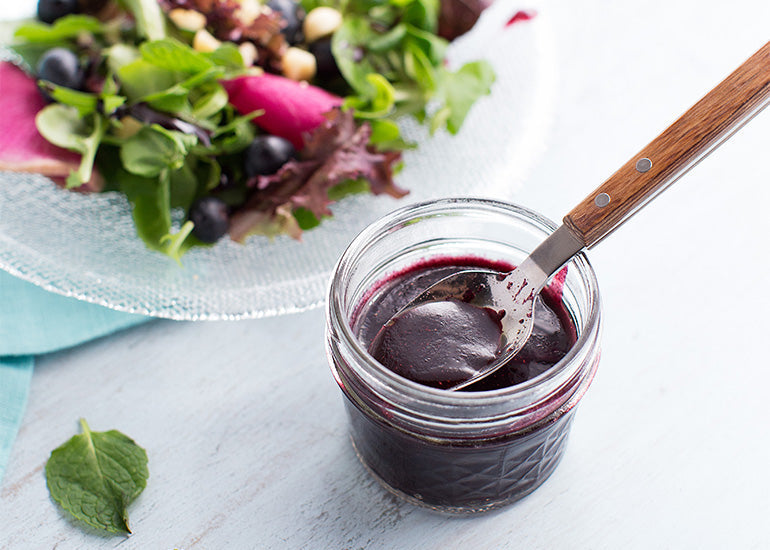If you've ever wondered about the difference between acai powder and maqui powder, you're not alone. These two popular Navitas Organics products have some undeniable similarities! Indeed, both are purple berries hailing from South America. Fresh out of the bag, they look similar, too: both are very dark (almost black!) fine powders. But, make no mistake, acai and maqui have some distinct differences that put them more in the family category of cousins rather than twins.
Acai, in particular, stands out for its unique nutrient profile, offering healthy fats, fiber, and a powerful dose of antioxidants. To explore the full benefits of acai and how it compares to other superfoods, check out our complete guide.
Acai Powder
Acai berries are local to regions of the Amazon in Brazil. Though it is considered a berry, acai doesn't grow on a bush like most berries, but rather on tall palm trees. It looks like a rounder, darker version of a blueberry on the outside, but don’t try biting into one or your next call will be to your dentist! It has a huge pit on the inside and it's only the succulent flesh surrounding this pit that is edible.
Acai contains some essential minerals, such as calcium and iron, and is considered a top antioxidant food with a healthy dose of antioxidants called anthocyanins, which give acai its purple color. Acai has the unusual honor of also containing healthy fats, like essential fatty acids and monosaturated fats (both of which contribute to great skin, and part of the reason why acai is often linked to “getting the glow).” Because of these fats, acai has a luxuriously smooth texture when blended with fruits or liquid and its flavor is magnificent— with hints of berries, vanilla and chocolate. As a true taste-sensation, organic acai powder is a true fan-favorite ingredient for healthful smoothies, ice cream and pudding. It's recommended not to cook with acai on high heat, however, so as not to compromise its nutrition.
Maqui Powder
Maqui berries thrive in the Patagonian region of Chile and are sometimes dubbed the “rainforest blueberry.” Like blueberries, maqui grows on shrubs, and is about the size of a pea when fresh. Similar to acai, maqui is also a deep purple color, but this purple is so intense, it turns everything purple that it touches! This colorful quality is actually a big clue to maqui's true claim to fame: antioxidants. Like acai, maqui also contains primarily anthocyanin antioxidants, only much more! Though it doesn't contain the healthy fats that acai does, maqui also offers some vitamins, such as vitamin C, making it great for the immune system and powerfully anti-aging.
While the powder form is very convenient for making smoothies and sauces, it provides minimal flavor, so it's quite easy to add into anything that's blended for an anti-aging boost! Salad dressings, drinks and even glazes are just a few of the many things that excel with a maqui berry powder boost. maqui should be consumed in unheated or low-temperature recipes—the beautiful purple color that is a signal of its active antioxidant properties fades quickly when exposed to heat.
There's definitely no clear winner when it comes to acai versus maqui—both serve as a wonderful way to get antioxidants and a variety of nutrients into your diet with flavor and color. Variety is always a cornerstone of a healthy diet, so why not switch them up!
)

